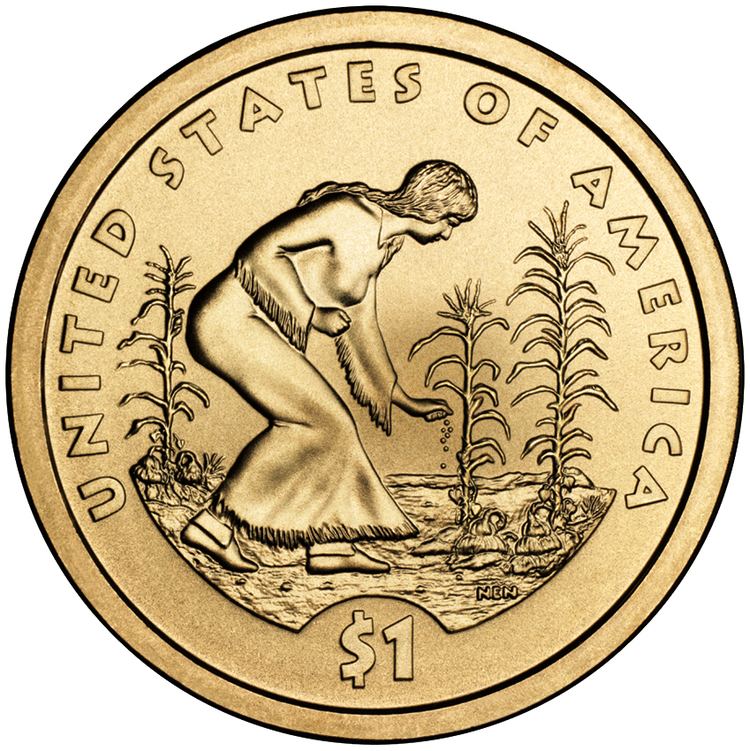 | ||
The Three Sisters are the three main agricultural crops of various Native American groups in North America: winter squash, maize (corn), and climbing beans (typically tepary beans or common beans). The Iroquois, among others, used these "Three Sisters" as trade goods.
In a technique known as companion planting the three crops are planted close together. Flat-topped mounds of soil are built for each cluster of crops. Each mound is about 30 cm (12 in) high and 50 cm (20 in) wide, and several maize seeds are planted close together in the center of each mound. In parts of the Atlantic Northeast, rotten fish or eels are buried in the mound with the maize seeds, to act as additional fertilizer where the soil is poor. When the maize is 15 cm (6 inches) tall, beans and squash are planted around the maize, alternating between the two kinds of seeds. The process to develop this agricultural knowledge took place over 5,000–6,500 years. Squash was domesticated first, with maize second and then beans being domesticated. Squash was first domesticated 8,000–10,000 years ago.
The three crops benefit from each other. The maize provides a structure for the beans to climb, eliminating the need for poles. The beans provide the nitrogen to the soil that the other plants use, and the squash spreads along the ground, blocking the sunlight, helping prevent the establishment of weeds. The squash leaves also act as a "living mulch", creating a microclimate to retain moisture in the soil, and the prickly hairs of the vine deter pests. Corn, beans, and squash contain complex carbohydrates, essential fatty acids and all eight essential amino acids, allowing most Native American tribes to thrive on a plant-based diet.
Native Americans throughout North America are known for growing variations of Three Sisters gardens. The milpas of Mesoamerica are farms or gardens that employ companion planting on a larger scale. The Ancestral Puebloans are known for adopting this garden design in a drier environment. The Tewa and other peoples of the Southwestern United States often included a "fourth Sister", Rocky Mountain bee plant (Cleome serrulata), which attracts bees to help pollinate the beans and squash.
The Three Sisters planting method is featured on the reverse of the 2009 US Sacagawea dollar.
